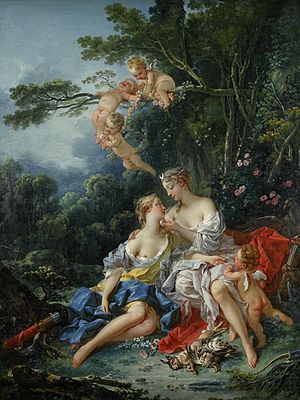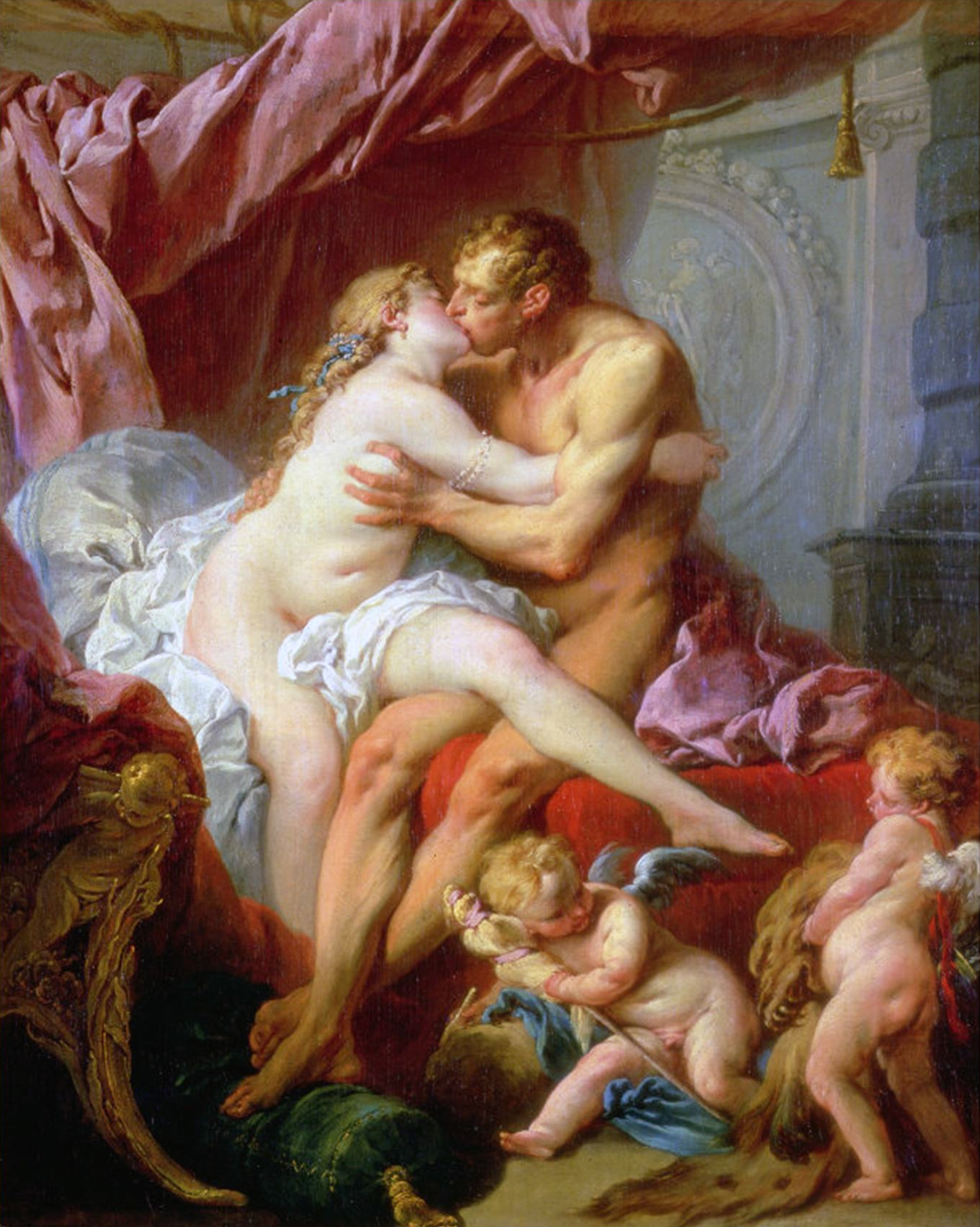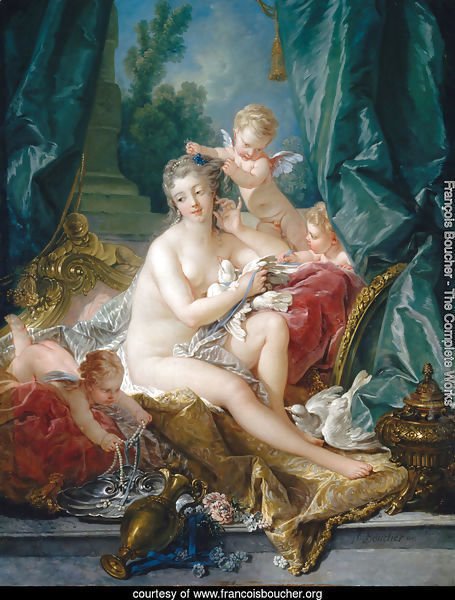Francois Boucher (1703-1770) was perhaps one of the most celebrated Rococo painters of the eighteenth century. Born in Paris, he would start his lengthy and prolific career as staff to the Royal Painting and Sculpture Academy in his hometown and would eventually go on to become the Premier Peintre du Roi (First Painter of the King) in 1765. In the end of his career, repeated accusations against his character were made by French philosopher Denis Diderot. These statements certainly ruined his reputation, as Diderot claimed that he was “prostituting his wife” and “illustrated the extramarital relations of the king” (www.francoisboucher.org).
“[Boucher] forgoes traditional rural innocence to portray scenes with a definitive style of eroticism, and his mythological scenes are passionate and amorous rather than traditionally epic”
~www.francoisboucher.org
Personal actions aside, Boucher possesses an incredibly imaginative and romantic mind that rivals that of Fragonard and Watteau. His playful interpretation of erotica was a uniquely naive look into the sexualized nature of the average citizen as well as the powerful gods. Such is displayed in his pieces shown below, with emphasis on his piece “Jupiter and Callisto,” one of the few paintings that focuses on same-sex romantics, although veiled in mythological trickery.


Hercules and Omphale is an excellent example to Boucher’s interpretation of love and sex. It is a gentle kind, with no fault or crudeness. We see here that the infant Cupids are relaxed, unconcerned with the activities going on, signifying no wrongness. Each of the figures is covered and rendered in a loving embrace with delicate skin.



Even here, where Boucher depicts a company-less Venus, she is carefully rendered with love and compassion. We see love in the playful strokes of Boucher’s art, regardless of the topic, sensual or otherwise. We gain an intimate knowledge of the scene, and it feels as if we could be peering in from behind the bushes to observe each character as opposed to the separated audience we are. Boucher marks the Rococo period excellently with his work, and does so in a playful yet refined manner.
Sources: https://www.google.ca/url?sa=i&rct=j&q=&esrc=s&source=images&cd=&cad=rja&uact=8&ved=2ahUKEwi1ltav1ubdAhVVIDQIHfngC_0QjRx6BAgBEAU&url=https%3A%2F%2Fcommons.wikimedia.org%2Fwiki%2FFile%3AFrancois_Boucher_Heracles_and_Omphale.jpg&psig=AOvVaw0EyHfiUbtXUS8XgSbxBjmX&ust=1538532493936357 https://www.francoisboucher.org/biography.html https://www.google.ca/url?sa=i&rct=j&q=&esrc=s&source=images&cd=&cad=rja&uact=8&ved=2ahUKEwjX5J2U2ebdAhXTFzQIHRiDAlYQjRx6BAgBEAU&url=https%3A%2F%2Fen.wikipedia.org%2Fwiki%2FJupiter_and_Callisto_(Boucher%2C_1744)&psig=AOvVaw3iMklEhWfc28ER_on7wi7x&ust=1538532352318447 https://www.google.ca/imgres?imgurl=https%3A%2F%2Fupload.wikimedia.org%2Fwikipedia%2Fcommons%2Fd%2Fd9%2FBoucher_charmes_de_la_vie_champetre.jpg&imgrefurl=https%3A%2F%2Fcommons.wikimedia.org%2Fwiki%2FFile%3ABoucher_charmes_de_la_vie_champetre.jpg&docid=78KaPoYLrkZcsM&tbnid=iOYLwQf0NvizKM%3A&vet=10ahUKEwirk-S12-bdAhUiNX0KHUu5D5UQMwg4KAAwAA..i&w=758&h=520&bih=657&biw=1396&q=the%20charms%20of%20life%20champetre%20analysis&ved=0ahUKEwirk-S12-bdAhUiNX0KHUu5D5UQMwg4KAAwAA&iact=mrc&uact=8 https://www.google.ca/url?sa=i&rct=j&q=&esrc=s&source=images&cd=&cad=rja&uact=8&ved=2ahUKEwjencTh3ObdAhXkIDQIHagzBbgQjRx6BAgBEAU&url=http%3A%2F%2Fwww.sightswithin.com%2FFrancois.Boucher%2FAre_They_Thinking_About_the_Grape%253F%2F&psig=AOvVaw2mqnLxreXbsSvmWI-PlXiS&ust=1538534210852180